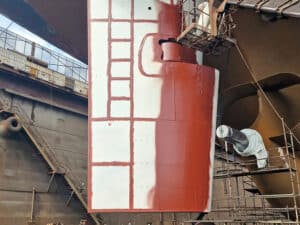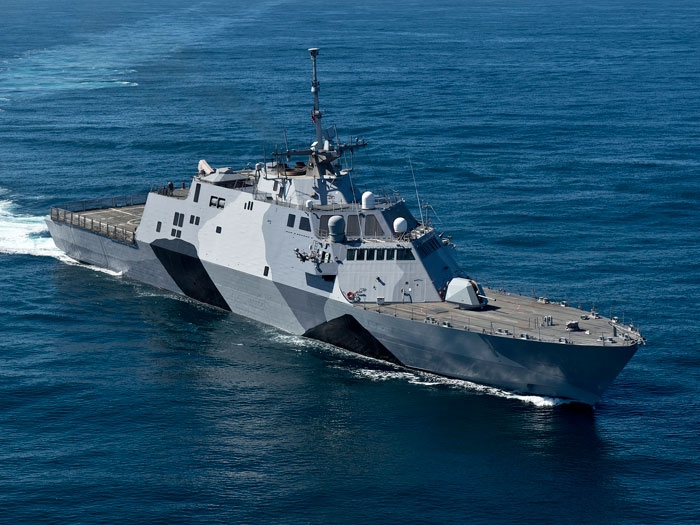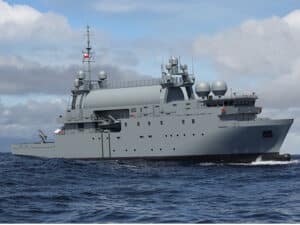
GAO reports on Navy LCS delivery decisions
Written by Nick Blenkey
LCS 1 underway in the Pacific
OCTOBER 1, 2014 — GAO has issued another report (GAO-14-827) on issues related to the deliveries of the first two Littoral Combat Ships.
In August 2010, GAO reported that the ships were incomplete at delivery and in November 2013, GAO reported on significant quality problems with Navy ships, including LCS 1 and LCS 2, noting that the Navy regularly accepts ships with numerous open deficiencies.
Congress mandated that GAO review the Navy’s compliance with federal regulations in accepting LCS 1 and LCS 2. This latest report assesses the extent to which the Navy complied with applicable federal regulations, policies, and contracts and evaluates the basis for and outcomes from decisions to accept these ships.
The report finds that Navy decisions to accept the first two littoral combat ships (LCS)—LCS 1 and LCS 2—in incomplete, deficient conditions complied with the Federal Acquisition Regulation’s (FAR) acceptance provisions, largely due to the cost-reimbursement type contracts in place to construct these ships. The Navy also met FAR requirements related to responsibility for and place of acceptance, among other provisions, by using an authorized Navy representative to accept each ship at its respective contractor’s facility.
Under the cost-reimbursement contracts, the LCS 1 and LCS 2 prime contractors were only required to give their best efforts to complete quality-related activities—along with the other work specified in the contracts—up to each contract’s estimated cost. These efforts resulted in both ships not completing all required sea trials, including acceptance and final contract trials.
GAO says that not completing these trials increased knowledge gaps related to ship performance and deficiencies.
According to GAO, Navy decisions to accept delivery of LCS 1 and LCS 2 in incomplete, deficient conditions were driven by a focus on near-term cost performance by shipbuilders, a desire to introduce the long-delayed ships to the fleet, and—in the case of LCS 1—environmental and treaty considerations associated with constructing that ship adjacent to the Great Lakes.
“The Navy prioritized these factors over its quality assurance processes for both ships, which has caused it to devote considerably more time and money to resolving deficiencies after delivery than anticipated,” says GAO. “However, because the Navy did not establish clear deadlines for resolving ship deficiencies, corrections were allowed to lag, to the point that fleet operators inherited unresolved deficiencies on each ship. These deficiencies have constrained recent shipboard operations.”
Read the report HERE





Leave a Reply
You must be logged in to post a comment.